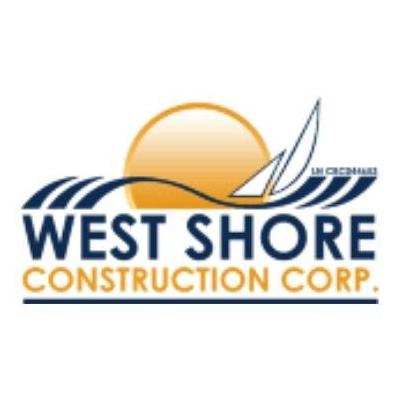Top Emerging Technologies in the Patient Handling Equipment Market
Patient Handling Equipment Market Overview
The Global Patient Handling Equipment Market is poised for substantial growth over the coming years. Driven by rising healthcare demands, an increasing aging population, and a strong focus on patient safety and mobility, the market is projected to grow from USD 14.6 billion in 2025 to approximately USD 25.2 billion by 2033, reflecting a steady CAGR of 7.2%.
Get a SAMPLE PDF (Including Full TOC, Table and Figures)@
https://m2squareconsultancy.com/request-sample/patient-handling-equipment-market
Patient handling equipment encompasses devices and systems designed to assist healthcare providers in lifting, transferring, repositioning, and mobilizing patients safely and efficiently. These solutions are critical in reducing caregiver injuries, improving patient outcomes, and ensuring compliance with regulatory safety standards.
View Full Research Report@
https://m2squareconsultancy.com/reports/patient-handling-equipment-market
Key Market Drivers
Aging Population
The global population of elderly individuals is rising rapidly, leading to increased demand for mobility support and patient handling solutions. Hospitals, nursing homes, and homecare providers are increasingly adopting modern equipment to manage patient care effectively.
Rising Incidence of Chronic Diseases
Conditions such as obesity, arthritis, neurological disorders, and post-surgery recovery require frequent patient transfers and mobility assistance. This drives demand for reliable patient handling devices.
Emphasis on Caregiver Safety
Healthcare workers face high risks of musculoskeletal injuries due to patient lifting and transfer. Organizations are investing in patient handling solutions to minimize these risks and ensure safer working conditions.
Technological Advancements
Innovations in patient handling equipment, including powered lifts, transfer aids, and smart beds, are improving patient comfort, reducing strain on caregivers, and increasing operational efficiency.
Growing Healthcare Infrastructure
Expansion of hospitals, rehabilitation centers, and homecare services worldwide is creating a significant need for advanced patient handling solutions.
Market Segmentation
By Product Type
Patient Lifts: Ceiling-mounted, mobile, and sit-to-stand lifts that help move patients safely.
Stretchers & Trolleys: Used in emergency care, operating rooms, and general patient transfers.
Patient Transfer Aids: Sliding boards, transfer belts, and hoists to assist in repositioning.
Beds & Mattresses: Electric beds, ICU beds, and pressure relief mattresses to improve patient care.
Other Devices: Wheelchairs, commode chairs, and bath aids that enhance mobility and hygiene.
By End User
Hospitals: Largest market segment due to high patient volumes and diverse care requirements.
Long-Term Care Facilities: Nursing homes and rehabilitation centers require specialized handling equipment.
Homecare Settings: Portable and easy-to-use solutions are gaining traction for home-based patient care.
Ambulatory Surgical Centers: Focus on quick and safe patient handling during surgical procedures.
By Region
North America: Leads the market due to advanced healthcare infrastructure, high adoption of safety regulations, and a growing elderly population.
Europe: Strong market presence driven by government initiatives and increasing awareness of caregiver safety.
Asia-Pacific: Fastest-growing region, fueled by expanding healthcare services, rising awareness, and increasing investments in hospital infrastructure.
Rest of the World: Emerging markets in Latin America and the Middle East are witnessing gradual adoption due to improving healthcare access.
Key Market Players
The Patient Handling Equipment Market is competitive, with companies focusing on innovation, safety, and ergonomics. Prominent players include:
Hill-Rom Holdings, Inc. – Leading provider of hospital beds, lifts, and mobility solutions.
Arjo AB – Known for patient lifts, hygiene equipment, and pressure care solutions.
Invacare Corporation – Specializes in wheelchairs, transfer devices, and mobility aids.
Stryker Corporation – Offers stretchers, beds, and patient handling solutions.
Etac AB – Provides ergonomic equipment for safe patient transfer.
Drive DeVilbiss Healthcare – Focused on mobility and homecare patient solutions.
Handicare Group AB – Supplies patient lifts, beds, and safety systems.
Guldmann A/S – Ceiling-mounted lifts and transfer solutions for hospitals and nursing homes.
ArjoHuntleigh – Integrated patient handling and hygiene products.
These companies emphasize product innovation, ergonomic design, and compliance with global safety standards.
Market Trends
Smart & Automated Equipment: Integration of sensors, IoT, and AI to monitor patient movement and ensure safety.
Portable & Homecare Devices: Lightweight, foldable lifts and transfer aids for home use.
Robotics & Assistive Technology: Robotic patient lifts to reduce caregiver strain and increase efficiency.
Sustainability: Eco-friendly materials and energy-efficient devices in hospital and homecare settings.
Challenges
High Initial Costs: Advanced patient handling equipment can be expensive for smaller facilities.
Training Requirements: Staff require proper training to operate equipment safely.
Maintenance & Compliance: Regular maintenance and adherence to safety standards are critical.
Limited Awareness in Emerging Markets: Adoption can be slow due to lack of awareness or funding.
Frequently Asked Questions (FAQs)
Q1. What is driving the growth of the Patient Handling Equipment Market?
Q2. Which equipment types dominate the market?
Q3. Who are the major players in the Patient Handling Equipment Market?
Q4. Which region is expected to grow fastest?
Q5. What are the key trends shaping the market?
Related Report
https://m2squareconsultancy.com/reports/mobile-health-mhealth-market https://m2squareconsultancy.com/reports/mrna-therapeutics-market https://m2squareconsultancy.com/reports/ophthalmic-equipment-market https://m2squareconsultancy.com/reports/ophthalmic-surgical-devices-market https://m2squareconsultancy.com/reports/oral-thin-films-market https://m2squareconsultancy.com/reports/orthopedic-devices-market https://m2squareconsultancy.com/reports/orthopedic-reconstruction-market
Conclusion
The Patient Handling Equipment Market is witnessing robust growth, driven by the need for safer, more efficient patient care and caregiver support. With rising technological advancements, expanding healthcare infrastructure, and a growing elderly population, the market is set for strong expansion through 2033. Healthcare providers globally are focusing on ergonomic, automated, and smart patient handling solutions, ensuring improved patient outcomes, reduced caregiver injuries, and operational efficiency.
Top Emerging Technologies in the Patient Handling Equipment Market
Patient Handling Equipment Market Overview
The Global Patient Handling Equipment Market is poised for substantial growth over the coming years. Driven by rising healthcare demands, an increasing aging population, and a strong focus on patient safety and mobility, the market is projected to grow from USD 14.6 billion in 2025 to approximately USD 25.2 billion by 2033, reflecting a steady CAGR of 7.2%.
Get a SAMPLE PDF (Including Full TOC, Table and Figures)@
https://m2squareconsultancy.com/request-sample/patient-handling-equipment-market
Patient handling equipment encompasses devices and systems designed to assist healthcare providers in lifting, transferring, repositioning, and mobilizing patients safely and efficiently. These solutions are critical in reducing caregiver injuries, improving patient outcomes, and ensuring compliance with regulatory safety standards.
View Full Research Report@ https://m2squareconsultancy.com/reports/patient-handling-equipment-market
Key Market Drivers
Aging Population
The global population of elderly individuals is rising rapidly, leading to increased demand for mobility support and patient handling solutions. Hospitals, nursing homes, and homecare providers are increasingly adopting modern equipment to manage patient care effectively.
Rising Incidence of Chronic Diseases
Conditions such as obesity, arthritis, neurological disorders, and post-surgery recovery require frequent patient transfers and mobility assistance. This drives demand for reliable patient handling devices.
Emphasis on Caregiver Safety
Healthcare workers face high risks of musculoskeletal injuries due to patient lifting and transfer. Organizations are investing in patient handling solutions to minimize these risks and ensure safer working conditions.
Technological Advancements
Innovations in patient handling equipment, including powered lifts, transfer aids, and smart beds, are improving patient comfort, reducing strain on caregivers, and increasing operational efficiency.
Growing Healthcare Infrastructure
Expansion of hospitals, rehabilitation centers, and homecare services worldwide is creating a significant need for advanced patient handling solutions.
Market Segmentation
By Product Type
Patient Lifts: Ceiling-mounted, mobile, and sit-to-stand lifts that help move patients safely.
Stretchers & Trolleys: Used in emergency care, operating rooms, and general patient transfers.
Patient Transfer Aids: Sliding boards, transfer belts, and hoists to assist in repositioning.
Beds & Mattresses: Electric beds, ICU beds, and pressure relief mattresses to improve patient care.
Other Devices: Wheelchairs, commode chairs, and bath aids that enhance mobility and hygiene.
By End User
Hospitals: Largest market segment due to high patient volumes and diverse care requirements.
Long-Term Care Facilities: Nursing homes and rehabilitation centers require specialized handling equipment.
Homecare Settings: Portable and easy-to-use solutions are gaining traction for home-based patient care.
Ambulatory Surgical Centers: Focus on quick and safe patient handling during surgical procedures.
By Region
North America: Leads the market due to advanced healthcare infrastructure, high adoption of safety regulations, and a growing elderly population.
Europe: Strong market presence driven by government initiatives and increasing awareness of caregiver safety.
Asia-Pacific: Fastest-growing region, fueled by expanding healthcare services, rising awareness, and increasing investments in hospital infrastructure.
Rest of the World: Emerging markets in Latin America and the Middle East are witnessing gradual adoption due to improving healthcare access.
Key Market Players
The Patient Handling Equipment Market is competitive, with companies focusing on innovation, safety, and ergonomics. Prominent players include:
Hill-Rom Holdings, Inc. – Leading provider of hospital beds, lifts, and mobility solutions.
Arjo AB – Known for patient lifts, hygiene equipment, and pressure care solutions.
Invacare Corporation – Specializes in wheelchairs, transfer devices, and mobility aids.
Stryker Corporation – Offers stretchers, beds, and patient handling solutions.
Etac AB – Provides ergonomic equipment for safe patient transfer.
Drive DeVilbiss Healthcare – Focused on mobility and homecare patient solutions.
Handicare Group AB – Supplies patient lifts, beds, and safety systems.
Guldmann A/S – Ceiling-mounted lifts and transfer solutions for hospitals and nursing homes.
ArjoHuntleigh – Integrated patient handling and hygiene products.
These companies emphasize product innovation, ergonomic design, and compliance with global safety standards.
Market Trends
Smart & Automated Equipment: Integration of sensors, IoT, and AI to monitor patient movement and ensure safety.
Portable & Homecare Devices: Lightweight, foldable lifts and transfer aids for home use.
Robotics & Assistive Technology: Robotic patient lifts to reduce caregiver strain and increase efficiency.
Sustainability: Eco-friendly materials and energy-efficient devices in hospital and homecare settings.
Challenges
High Initial Costs: Advanced patient handling equipment can be expensive for smaller facilities.
Training Requirements: Staff require proper training to operate equipment safely.
Maintenance & Compliance: Regular maintenance and adherence to safety standards are critical.
Limited Awareness in Emerging Markets: Adoption can be slow due to lack of awareness or funding.
Frequently Asked Questions (FAQs)
Q1. What is driving the growth of the Patient Handling Equipment Market?
Q2. Which equipment types dominate the market?
Q3. Who are the major players in the Patient Handling Equipment Market?
Q4. Which region is expected to grow fastest?
Q5. What are the key trends shaping the market?
Related Report
https://m2squareconsultancy.com/reports/mobile-health-mhealth-market
https://m2squareconsultancy.com/reports/mrna-therapeutics-market
https://m2squareconsultancy.com/reports/ophthalmic-equipment-market
https://m2squareconsultancy.com/reports/ophthalmic-surgical-devices-market
https://m2squareconsultancy.com/reports/oral-thin-films-market
https://m2squareconsultancy.com/reports/orthopedic-devices-market
https://m2squareconsultancy.com/reports/orthopedic-reconstruction-market
Conclusion
The Patient Handling Equipment Market is witnessing robust growth, driven by the need for safer, more efficient patient care and caregiver support. With rising technological advancements, expanding healthcare infrastructure, and a growing elderly population, the market is set for strong expansion through 2033. Healthcare providers globally are focusing on ergonomic, automated, and smart patient handling solutions, ensuring improved patient outcomes, reduced caregiver injuries, and operational efficiency.


